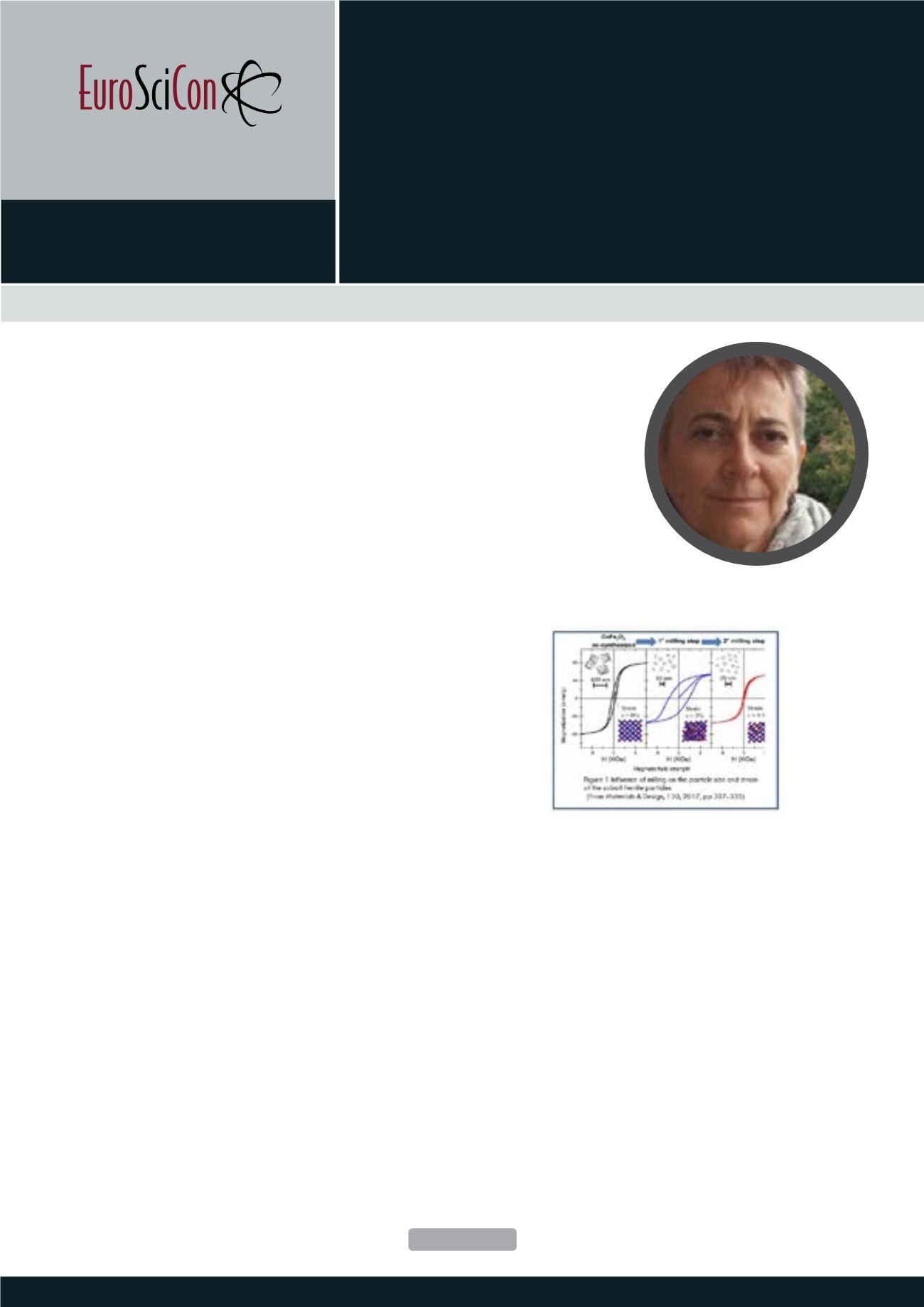

Nano Research & Applications
ISSN: 2471-9838
April 26-27, 2018
Rome, Italy
NanoMat 2018
Page 16
17
th
Edition of International Conference on
Emerging Trends in
Materials Science and
Nanotechnology
A
mong
multifunctional
materials
magnetoelectric
multiferroics are a special class with coupled ferromagnetic
and ferroelectric orders. They are particularly appealing because
they not only show the characteristic of the single ferroic
orders where the electric field
E
, magnetic field
H
, and stress σ
control the electric polarization
P
, magnetization
M
, and strain
ε, respectively, but also because interactions between them
lead to additional functionalities. Therefore in a magnetoelectric
multiferroic,
H
may control
P
or
E
may control
M
. In composite
materials the electric and magnetic degrees of freedom are
located in different components and are interfacially coupled
to each other. Several applications, including magnetic sensors,
high-frequency inductors, memory devices, and high-frequency
signal processing devices, (very high-density memory storage
media) have been proposed and demonstrated. Nanopowders
are mainly synthesized by solid state synthesis, coprecipitation,
hydrothermal and sol-gel methods and the magnetic properties
vary by changing the processing parameters and/or the
stoichiometry. The magnetostrictive and piezoelectric materials
used as constituents of magnetoelectric (ME) composites are
ferromagnetic oxides, including ferrites like cobalt ferrite (CFO),
manganites, 3d-transition metals/alloys for the magnetic phase
and lead zirconate titanate (PZT), barium titanate (BTO), or lead
magnesium niobate-lead titanate (PMN-PT) for the ferroelectric
phase. Bulk and thin or thick film structure are produced where
the connectivity of the phases plays a critical role; and the 3-0
type particulate structure, 2-2 type laminate structure and the
1-3 type cylinder matrix are the most frequently investigated.
The influence of the processing on the microstructure and
final properties is shown for PZT-CFO particulate and laminate
composites with focus on the role played by the milling and
densification treatments that allow producing high- and low-
coercivity nanosized cobalt ferrite nanoparticles and fully dense
composites.
Recent Publications
1. Srinivasan G, Priya S and Sun N X (ed) (2015)
Composite magnetoelectrics: materials, structures,
and applications, Cambridge: Woodhead, ISBN: 978-1-
78242-254-9.
2. Galizia P, Ciuchi I V, Gardini D, Baldisserri C and Galassi
C (2016) Bilayer film based on composite CoFe
2
O
4
/TiO
2
and niobium-doped PZT by electrophoretic Deposition
Journal of the European Ceramic Society 36(2):373–
380.
3. Galizia P, Baldisserri C, Capiani C and Galassi C (2016)
Multiple parallel twinning overgrowth in nanostructured
dense cobalt ferrite. Materials and Design 109:19–26.
4. Galizia P, Ciomaga C E, Mitoseriu L and Galassi C (2017)
PZT-cobalt ferrite particulate composites: densification
and lead losses control by quite-fast sintering Journal
of the European Ceramic Society 37:161–168.
5. Galizia P, Cernea M, Mihalache V, Diamandescu L,
Maizza G and Galassi C (2017) Easy batch-scale
production of cobalt ferrite nanopowders by two-
Multiferroic ceramic composites: processing
and microstructure
Carmen Galassi
Institute of Science and Technology for Ceramics - National Research Council of Italy, Italy
Carmen Galassi, Nano Res Appl, Volume:4
DOI: 10.21767/2471-9838-C1-007
















